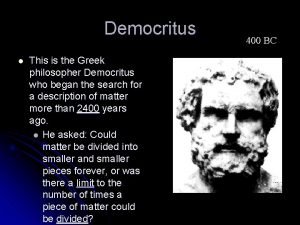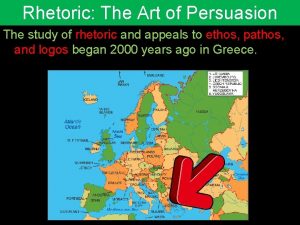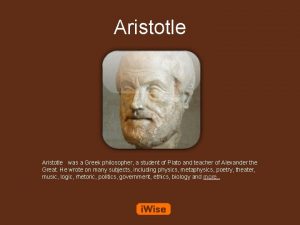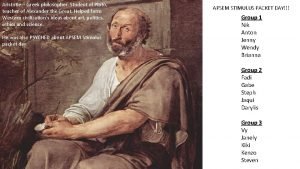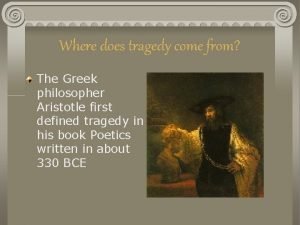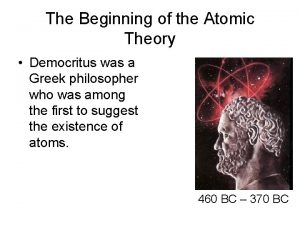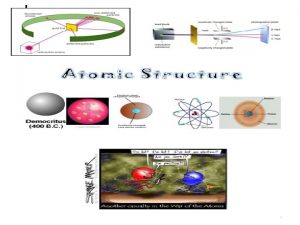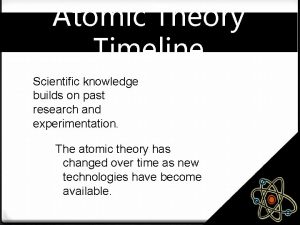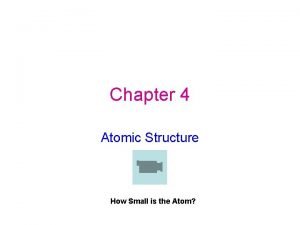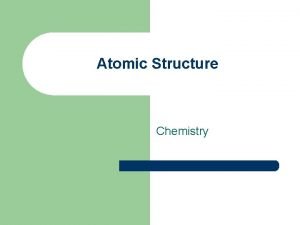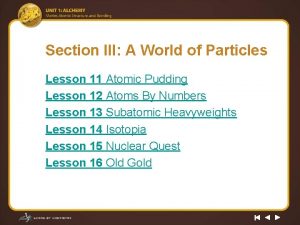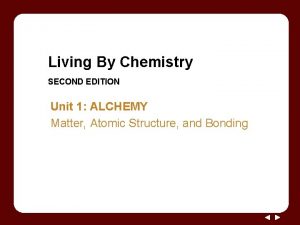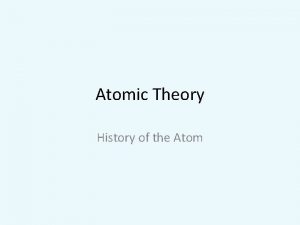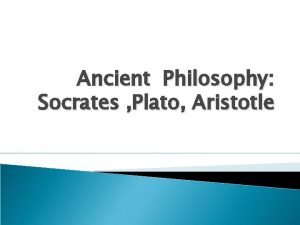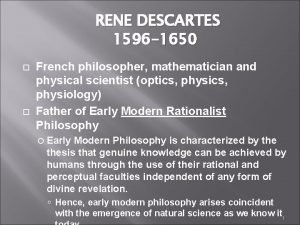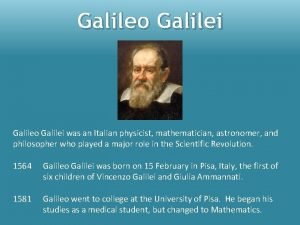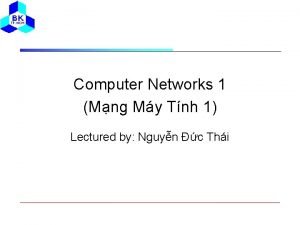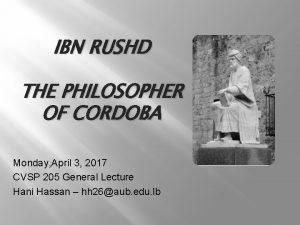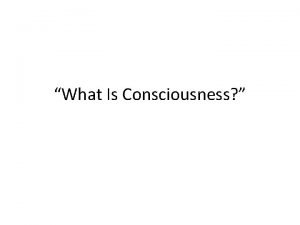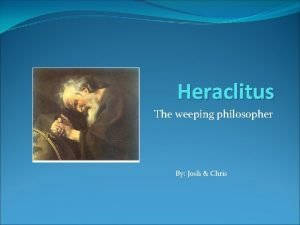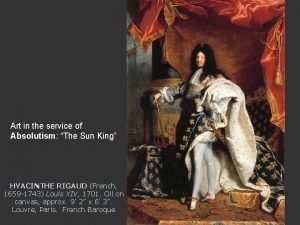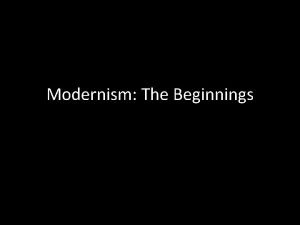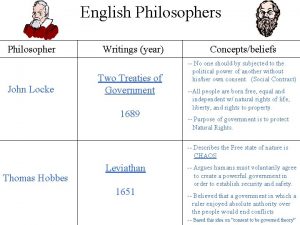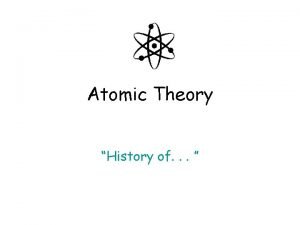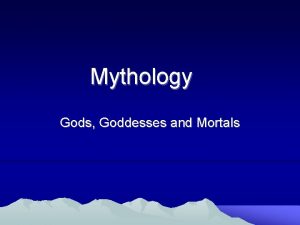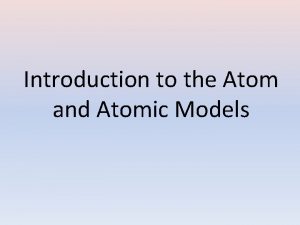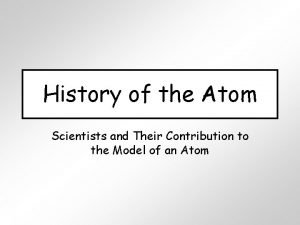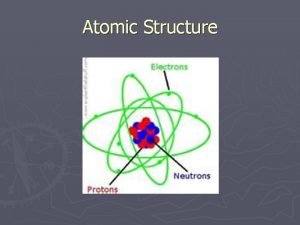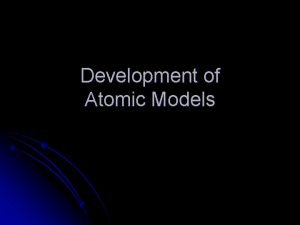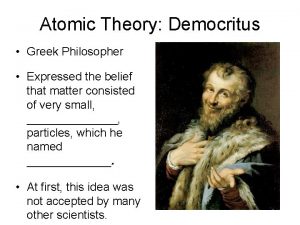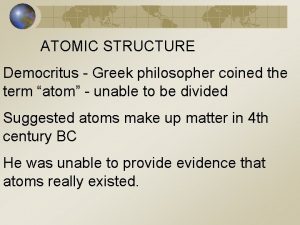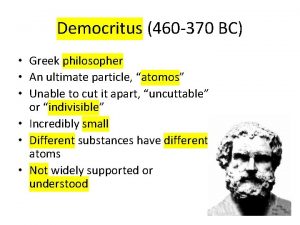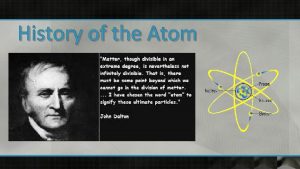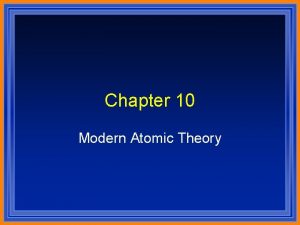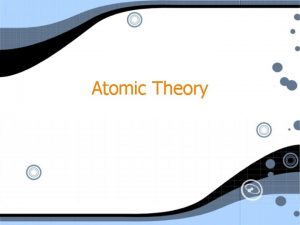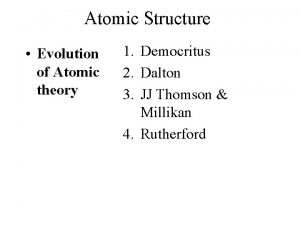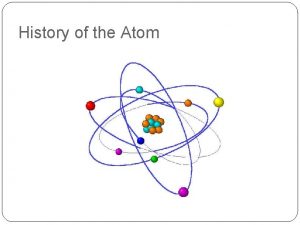Development of Atomic Models Democritus l Greek philosopher





















































- Slides: 53

Development of Atomic Models

Democritus l Greek philosopher (400 BC) Matter can’t be divided forever Eventually, a piece is “indivisible” l “Atomos, ” = “not to be cut” l l

Dalton’s Atomic Theory (early 1800’s) l Matter made of tiny indivisible particles called “atoms”. l Each element’s atoms are different.

l Compounds form when atoms combine in fixed proportions. l Chemical reactions involve rearrangement of atoms. l Atoms are conserved in chemical reactions.

Page from Dalton’s Journal

Dalton’s Atomic Theory called “Hard Spheres Model”

JJ Thomson (1897) l Studied “cathode rays” (electric current) in a “Crooke’s Tube”. l Fluorescent screen, shows how cathode ray behaved in a magnetic field. Lets draw a typical Crooke’s Tube in our notes.

Cathode Rays were negatively charged Bend toward (+) plate Cathode Ray Tube and Magnet http: //youtu. be/XU 8 n. MKkzb. T 8

Cathode Rays were particles They couldn’t pass through matter.

Thomson’s Conclusions l Negative “Cathode Ray” particles must come from within atoms. l Discovered first subatomic particle l Negative electron However, matter is neutral so a positive charge must exist to balance the negative!!

Thomson’s Theory: l Atoms are positively charged spheres with negatively charged particles scattered throughout. Called the “Plum Pudding Model” Brian Cox: Thompson and Discovery of Electron http: //youtu. be/Id. Tx. GJj. A 4 Jw

Ernest Rutherford (1908) l Physicist working in new field of radioactivity.

Found 3 Types of Radiation l Used magnetic field to isolate three types of radiation by their charge. l l l Alpha (α) Beta (β) Gamma (γ)

Gold Foil Experiment l Shot positive alpha particles, at thin piece of gold foil. l Fluorescent screen shows where particles went.

Observation: Most alpha particles passed straight through gold foil. Conclusion: Atom’s volume is mostly empty space.

Observation: Some alpha particles deflected at an angle or bounced back. Conclusion: Atoms have a very small, dense positively charged nucleus. http: //www. kentchemistry. com/moviesfiles/Units/Atomic. Structure/Ruthe rford 3. htm

Nucleus is extremely small compared to the size of the atom as a whole. Deflections happened rarely (1/8000). Modern Example of Gold Foil Experiment in Action http: //youtu. be/XBq. Hkraf 8 i. E

Rutherford’s Model is called the “Nuclear Model” Brian Cox: Rutherford and the Nucleus http: //youtu. be/wz. ALbz. Tdnc 8

Comparison to Thomson l Positive charge only in nucleus. l Negative particles scattered outside nucleus. l Charge not disbursed evenly. Simulator: https: //phet. colorado. edu/sims/html/rutherfordscattering/latest/rutherford-scattering_en. html

Niels Bohr (1913) l Came up with the “Planetary Model”

l Electrons circle nucleus in specific energy levels or “shells”. l The higher the “energy level, ” the higher the electron’s energy.

l Different energy levels can contain different numbers of electrons.

l n = the number of the energy level 2 2 n = maximum number of electrons an energy level can hold. Ex: Level 3 can hold 2(3)2 = 18 electrons

Energy Level configurations of neutral atoms are below its symbol. l Shows # of electrons in each occupied energy level l Ex: Bromine 2 -8 -18 -7

Draw a Bohr Atom Ex: Fluorine Atom (F) l Protons =9 l Neutrons = 10 l Electrons = 9 l How many energy levels do you draw? l How many electrons in each level?

Outermost Electrons Valence Electrons: l Electrons found in highest occupied energy level (furthest from nucleus) l Involved in forming bonds with other atoms l “Stable Octet” of valence is desirable l What Group on the Table is stable as atoms and doesn’t need to form bonds?


l Noble Gases: (Group 18) l “Inert” l Ex: and unreactive (have stable octet) Argon 2 -8 -8, Neon 2 -8 Note: Helium is a Noble Gas too! It only has 2 electrons but its one energy level is complete and stable

Valence Electrons l Look at last number in atom’s electron configuration to determine number of valence electrons. l Ex: l Al 2 -8 -3 3 valence l. F 2 -7 7 valence

Looking for Trends l Where do we see a similar valence electron pattern on the Periodic Table? l Down a Group? (column) l Across a Period? (row)


Lewis Dot Diagrams l Shows number of valence electrons an atom has as “dots” around atom’s symbol. Phosphorus is 2 -8 -5

Kernel Nucleus and non-valence electrons l Inner part of atom not involved directly in reactions l l Ex: l Al 2 -8 -3 has 10 kernel electrons and 3 valence electrons

Draw a Bohr Ion l One or more electrons gets added or taken out of the outer energy level. Ex: Magnesium Ion (Mg+2) l Protons = 12 l Neutrons = 12 l Electrons = 10

Pause for Thought l What do you think happens to the size of an atom when it gains or loses electrons and becomes an ion?

Positive Ions (cations) are smaller Lose electron(s) Ca atom 2 -8 -8 -2 Ca+2 ion 2 -8 -8

Negative Ions (anions) are larger Gain electron(s) P atom 2 -8 -5 P-3 ion 2 -8 -8

How Did Bohr Come Up With His Model? l Studied spectral lines emitted by various elements

What are Spectral Lines? l Energy absorbed by an atom causes it to emit a unique set of colored lines.

Spectral lines are different for each element l Used to identify elements present in a sample. (“Fingerprint”) l


What Causes Spectral Lines? Electrons jumping between energy levels l Electrons absorb energy then emit it l https: //phet. colorado. edu/en/simulation/legacy/discharge-lamps Video of Line Spectra of Hydrogen http: //www. mhhe. com/physsci/chemistry/essentialchemistry/flash/linesp 16. swf

Ground State l Electrons normally exist in lowest energy level possible called “ground state”. (stable) l “Ground state” e- configurations are written on periodic table l Ex: Aluminum is 2 -8 -3 Calcium is 2 -8 -8 -2

Excited State Electrons absorb a photon (or “quanta”) of energy and “jump up” to a higher energy level. This is called “excited state”. (unstable)

Jumping Electrons l Electrons quickly “fall back down” to ground state. (stable) l They emit a photon (or “quanta”) of energy that corresponds to how far they jumped.

l Each spectral line corresponds to a specific photon of energy that is released. Model Of Hydrogen Atom and Electrons Jumping http: //www. upscale. utoronto. ca/PVB/Harrison/Bohr. Model/Flash/Bohr. Model. html

REMEMBER Absorb Energy Jump Up Emit Energy Fall Down

Recognizing Excited State l Count total electrons given and see if the configuration matches the on the table. l Ex: 2 -8 -7 -3 = 20 electrons l Calcium l So (atomic # 20) is 2 -8 -8 -2 this must be showing one of the ways calcium could be in the excited

Modern Atomic Model l Sometimes called: l l Crash Course: History of Atomic Theory (9: 45) https: //www. youtube. com/watch? v=thn. Dx. Fdkz. Zs Charge Cloud Model Wave Mechanical Model Quantum Theory created to help describe spectral line signatures of multielectron elements

How is it Different from the Planetary Model? l We can’t tell exactly where an electron is!! Heisenberg’s Uncertainty Principle: We can’t know exact location and momentum of an electron at the same time.

l Electrons exist in “orbital clouds” l Denser the cloud region the higher the probability of finding an electron there. l Can’t tell exactly where an electron is, but can tell region of higher probability of finding it.

Excited Atoms and Charge Cloud l Excited electrons shift to probability regions further from the nucleus

Comparison to Bohr’s Electron Model l Charge Cloud = area of highest probability of finding electron, but can’t know exact location l Bohr Model = electrons in fixed orbit like planet around the sun at fixed distance from nucleus
 Democritus greek model
Democritus greek model Which greek philosopher defined the art of persuasion
Which greek philosopher defined the art of persuasion Aristotle was the student of
Aristotle was the student of Plato teacher of
Plato teacher of What greek philosopher named the appeals ethos pathos logos
What greek philosopher named the appeals ethos pathos logos Which ancient greek philosopher defined tragedy?
Which ancient greek philosopher defined tragedy? Atomic universe theory
Atomic universe theory Democritus atomic theory date
Democritus atomic theory date Democritus (400 bc) atomic model
Democritus (400 bc) atomic model Scientific theory timeline
Scientific theory timeline Fifth edition chemistry a molecular approach
Fifth edition chemistry a molecular approach History of the atom scientists
History of the atom scientists History of atomic theory timeline
History of atomic theory timeline Democritus greek model
Democritus greek model Relative atomic mass of beryllium
Relative atomic mass of beryllium Periodic tremds
Periodic tremds Atomic radii periodic table
Atomic radii periodic table How to calculate abundance of isotopes
How to calculate abundance of isotopes Difference between atomic mass and atomic number
Difference between atomic mass and atomic number Atomic number vs atomic radius
Atomic number vs atomic radius Atomic models in order
Atomic models in order Plum pudding model
Plum pudding model Lesson 11 atomic pudding models of the atom
Lesson 11 atomic pudding models of the atom Lesson 11 atomic pudding models of the atom answer key
Lesson 11 atomic pudding models of the atom answer key How many protons does oxygen have
How many protons does oxygen have What is the difference between model and semi modal
What is the difference between model and semi modal Protagoras
Protagoras American philosopher
American philosopher Harry potter – ликови
Harry potter – ликови Socrates divine mission
Socrates divine mission Social contract philosopher
Social contract philosopher French philosopher mathematician
French philosopher mathematician Italian physicist mathematician astronomer and philosopher
Italian physicist mathematician astronomer and philosopher Philosopher translator secretary architecture
Philosopher translator secretary architecture The philosopher's way 5th edition
The philosopher's way 5th edition Philosopher of cordoba
Philosopher of cordoba Arabic indic numerals
Arabic indic numerals David armstrong philosopher
David armstrong philosopher The weeping philosopher
The weeping philosopher Philosopher giving a lecture on the orrery
Philosopher giving a lecture on the orrery Alison jaggar
Alison jaggar Philosopher puns
Philosopher puns Harry potter similes
Harry potter similes The school of athens
The school of athens Enlightened philosopher pathfinder
Enlightened philosopher pathfinder Ancient greek atomic model
Ancient greek atomic model What is the greek miracle in greek mythology
What is the greek miracle in greek mythology Democritus atom modeli
Democritus atom modeli Democritus atom model
Democritus atom model Democritus contribution
Democritus contribution Democritus and aristotle
Democritus and aristotle Democritus teori atom
Democritus teori atom What scientist discovered the electron
What scientist discovered the electron Democritus milky way
Democritus milky way
